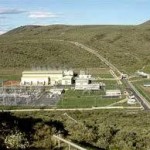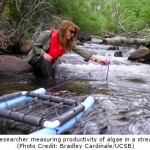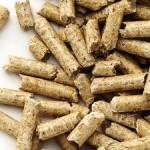 smart has always been a pioneer in matters of urban mobility, and with the smart fortwo electric drive, the company is showing the direction of development in cities around the world. Together with BASF, the largest automotive supplier in the chemical industry, smart is demonstrating its leading role in the use of forward-looking technologies above and beyond the drive system. The joint concept vehicle “smart forvision” presented at the 2011 International Motor Show in Frankfurt combines a futuristic design with technologies relating to energy efficiency, lightweight design and temperature management.
smart has always been a pioneer in matters of urban mobility, and with the smart fortwo electric drive, the company is showing the direction of development in cities around the world. Together with BASF, the largest automotive supplier in the chemical industry, smart is demonstrating its leading role in the use of forward-looking technologies above and beyond the drive system. The joint concept vehicle “smart forvision” presented at the 2011 International Motor Show in Frankfurt combines a futuristic design with technologies relating to energy efficiency, lightweight design and temperature management.
“With the forvision, smart is doing justice to its role as Daimler‘s think-tank for urban mobility. We are presenting numerous world premieres that make uncompromising electric mobility possible. With the clear objective of greatly increasing the zero-emission range, we concerned ourselves with all factors that influence this on the vehicle. This resulted in completely new concepts and materials in the areas of insulation, reflection, lightweight design and energy management. In addition to transparent organic solar cells, transparent and energy-saving light-emitting diodes and infrared-reflective films and coatings, high-performance foams are used for insulation against cold and heat. smart is also setting new standards of lightweight design with the use of the first all-plastic wheels,” says Dr. Annette Winkler, Head of smart. “In conjunction with smart’s revolutionary DNA, we have designed a vehicle that is so unique that we can’t wait to take it out of the research laboratory and onto the roads!”
“Cars of the future need materials and technologies which reduce energy consumption whilst also increasing the range and level of comfort. Our innovations make a decisive contribution to this,” says Dr. Christian Fischer, Head of BASF Polymer Research. “We are proud to have developed a holistic concept for sustainable urban mobility in cooperation with smart. Together we are presenting a pioneering vehicle which is without parallel.”
Thanks to the combination of smart’s automotive expertise and BASF’s material and system competence, a vehicle has been created which showcases technologies for sustainable and holistic electric mobility of the future. The researchers and designers intentionally realized a mixture of visionary materials and technologies in the concept vehicle – some of these are still at a laboratory stage while others have a realistic chance of entering series production.
Energy Efficiency: Light and Energy from Above
The hexagonal transparent areas on the roof of the smart forvision are an eye-catching feature – as the first light-transmitting roof that also generates energy. Transparent solar cells covering the entire roof surface are the technology used here. They are based on organic dyes embedded in a sandwich roof. The transparent dyes of the solar cells are light-activated. Even in diffused light and poor light conditions, they generate enough energy to power the multimedia components and the three fans that assist with climate management in the vehicle interior. If the vehicle is standing in the sun, the ventilation is permanently operated with the help of these solar cells, keeping the car cool. This new photovoltaic technology opens up further efficiency potential and the energy generated can be used for further applications in the car.
There is an additional new feature under the solar cells: transparent OLEDs (organic light-emitting diodes) illuminate the vehicle interior when the door is opened or a button pressed. When switched off, they allow for a clear view outside. This results in a glass roof effect during the daytime, whilst the areas are pleasantly illuminated without any dazzle at night. Thanks to a free choice of colours, the new OLEDs do not only offer more design freedom, they also consume less than half as much energy as conventional energy-saving lamps.
Lightweight Design: Different, Better, Stylish
In the smart forvision, a world first leads to a considerable weight reduction and a unique design: the first all-plastic wheel suitable for high-volume production. In its current development status, the wheel developed by BASF from a new high-performance material results in a considerable weight saving of three kilograms per wheel. Unlike conventional polyamide composite materials, this new plastic has long reinforcing fibres which improve its mechanical properties. The result: excellent thermal and chemical stability, dynamic strength, toughness and good continuous operating characteristics. First intensive product tests at smart show the performance capability of the all-plastic wheel and confirm the potential for possible use in production vehicles.
In addition to the tridion passenger cell, further components such as the doors are made of carbon-fiber-reinforced epoxy resin – a high-performance composite material. The use of such materials enables a weight saving of more than 50 percent to be achieved compared with steel or 30 percent compared with aluminum. Thanks to short hardening times, the resin systems from BASF are also suitable for producing larger volumes.
Heating: Close to the Body and Efficient
The multifunctional, comfortable and lightweight seats in the smart forvision offer a unique combination of efficient temperature management and an energy-saving lightweight design. Here, several innovative products are combined with one another for the first time. A new, lightweight, self-supporting plastic seat shell forms the basis.
Numerous studies have shown that the body only absorbs heat efficiently through certain contact points. This is why “e-textiles” – thin fabrics with custom-tailored conductive coatings – replace conventional seat heating in the smart forvision. With direct heating close to the body in the middle and lower back area of the seats, they provide for a pleasant feeling of warmth. The energy, space and weight-saving e-textile technology is also found in the armrests of the doors and ensures that body contact points sensitive to the cold are also warmed in this area.
The innovations continue with the seat foam, which provides for both comfort and weight savings. The material from BASF is around 10 to 20 percent lighter than other materials and enables different degrees of hardness to be realized in different areas of the upholstery in a single work operation – resulting in clear ergonomic advantages.
Superabsorbent containing fleece fabric integrated in the seat greatly enhances seating comfort through its passive climate control. Compared with conventional climate-controlled seats, the lightweight seat in the smart forvision does not have the complexity and energy requirement of mechanical ventilation.
Temperature Management: Heat Stays Outside
As a large amount of energy is needed to air condition and heat a vehicle, temperature management was a key focus area for the smart and BASF researchers. A whole package of measures has been implemented in the smart forvision to ensure more efficient air conditioning of the vehicle. At the same time, they make energy-intensive heating of the whole interior superfluous.
A heat shield that has not been previously used for automotive applications consists of a new kind of infrared-reflective film from BASF applied in the windscreen and side windows, protecting the car interior from heating up. Integrated between the panes of the safety glass, the metal-free film ensures that the infrared rays are effectively reflected. Thanks to its high transparency in the visible range, it can also be applied to tinted windows and guarantees an unprecedented level of reflection of sunlight and heat. Unlike metalized films, which are already used in some vehicles, the new film reflects only the infrared rays of the sun. Radio waves needed to use GPS, Bluetooth, mobile phones or for toll collection pass through the glass unhindered.














